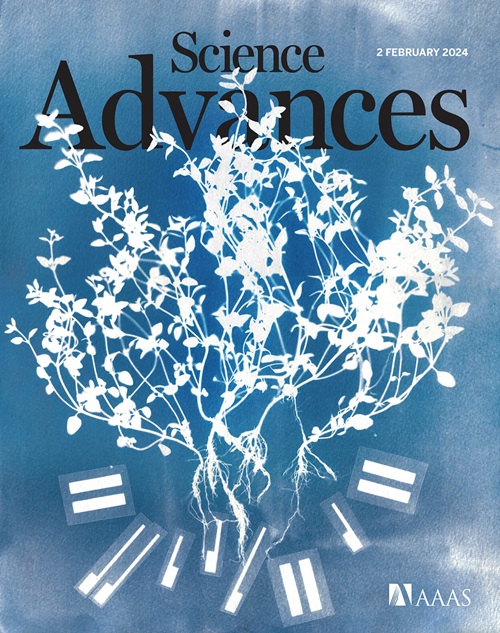Identification of an ionic mechanism for ERα-mediated rapid excitation in neurons
IF 11.7
1区 综合性期刊
Q1 MULTIDISCIPLINARY SCIENCES
引用次数: 0
Abstract
The major female ovarian hormone, 17β-estradiol (E确定ERα介导神经元快速兴奋的离子机制
主要的女性卵巢激素 17β-雌二醇(E 2)可在几毫秒内改变神经元的兴奋性,从而调节各种生理过程。雌激素受体-α(ERα)是经典的核受体,它作为膜结合受体介导 E 2 的这种快速作用,但其离子机制仍不清楚。在这里,我们发现了一种膜通道蛋白--氯化物胞内通道蛋白-1(Clic1)--能与ERα发生物理相互作用,并偏向于与膜结合的ERα。E 2 可增强 Clic1 介导的电流,而 E 2 的耗竭则会降低 Clic1 介导的电流。此外,在多个脑ERα群中,Clic1电流是介导E 2诱导的快速兴奋所必需的。此外,基因干扰下丘脑ERα神经元中的Clic1会削弱E 2对雌性体重平衡的调节作用。总之,我们发现Clic1氯离子通道是E 2诱导神经元快速兴奋的关键介质,它可能对受E 2调控的多种神经生物学过程产生广泛影响。
本文章由计算机程序翻译,如有差异,请以英文原文为准。
求助全文
约1分钟内获得全文
求助全文
来源期刊

Science Advances
综合性期刊-综合性期刊
CiteScore
21.40
自引率
1.50%
发文量
1937
审稿时长
29 weeks
期刊介绍:
Science Advances, an open-access journal by AAAS, publishes impactful research in diverse scientific areas. It aims for fair, fast, and expert peer review, providing freely accessible research to readers. Led by distinguished scientists, the journal supports AAAS's mission by extending Science magazine's capacity to identify and promote significant advances. Evolving digital publishing technologies play a crucial role in advancing AAAS's global mission for science communication and benefitting humankind.
 求助内容:
求助内容: 应助结果提醒方式:
应助结果提醒方式:


